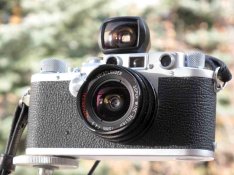This is going to sound arrogant, but I'll say it anyhow, and hope no one takes it the wrong way. They are great everyday users for those who know what they are doing. A beginner, or even someone with a fairly good knowledge, but with SLRs only, would likely be lost with one of them initially. There would be a steep learning curve for sure. Of course it can be done, but it would be far more seamless if you had a lot of practical experience photographing before picking one up. Basically, what I am saying it that having enough practice behind you to be able to judge light levels without a meter, and to pre-set exposure as you walk from one lighting to the other is crucial IMO. And then, on top of that, you have to get fast with all the little gizmos on the cameras. If you aren't fast and on the ball all the time, you miss shots left and right with Barnack Leicas.
Once you learn to work with them, they are about the most easy to carry high-quality mechanical camera you will find, and they can pack a lot of optical punch for such an easy to carry camera. (Not necessarily in absolute sharpness, but in style. A lot of the Leitz thread mount lenses have very distinctive optical "signatures" that would probably label them as "bad" lenses in a blind objective test by today's standards.) To me, they are the ultimate convenient day-to-day shooter that provides both "excellent" and "interestingly flawed" lenses in an easily portable kit, while also having extremely good mechanical quality.
If you are going to be troubled by loading the film through the bottom, by tiny RF and VF windows, by relatively weak and tiny RF patches, by getting good exposures without an in-camera meter, and all the other anachronisms of using these cameras in the context of today's do-everything cameras, then there is no shame in saying forget the Barnack Leica; it just isn't for me. IMO, you need to use the camera that suits your shooting to get your best results.








 I have the 7 and the viewfinder is nice, but it is a bit "tall".
I have the 7 and the viewfinder is nice, but it is a bit "tall".



